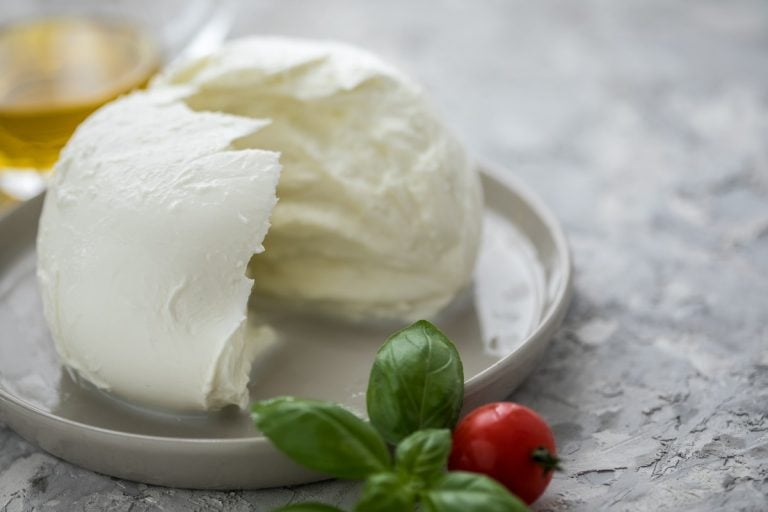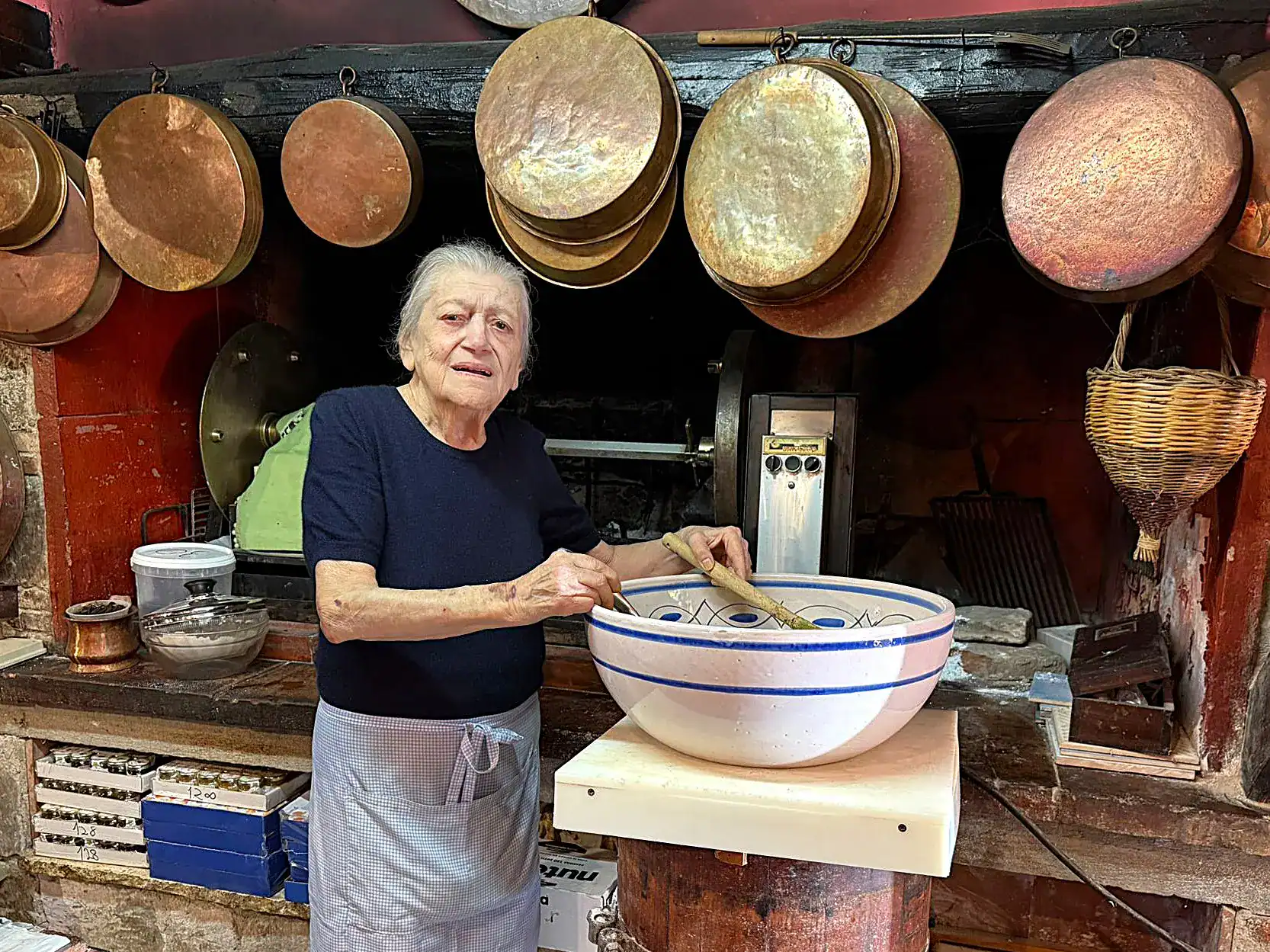To recognise a well-made mozzarella, perhaps handcrafted, with milk of the highest quality, a few steps are needed. Here are the aspects to consider in order to verify, by tasting it, the freshness and quality of a good mozzarella.
The tricks to recognise good quality mozzarella
Sight
Colour - A good mozzarella should be a porcelain white in "Bufala", and an ivory or even pale straw in Fiordilatte (cow's milk mozzarella). If the mozzarella is too white, it is probably not made from milk alone.
Intact skin - The thin outer skin (in mozzarella, this is not referred to as a rind) is tight, smooth and shiny - a good sign. If, on the other hand, it shows wrinkles, flaking or is torn, then the dairy product is no longer fresh. This is due to the prolonged soak in the salt brine: a high concentration of salt, in fact, tends to compromise not only the taste but also the texture of the stretched curd, making it too soft and gelatinous.
Liquid - If the mozzarella has just been made, it will be compact and characterised by a high liquid content; when cut, it will release a considerable amount of liquid. This characteristic applies especially to mozzarella di bufala, which "weeps" and is delicious. Fiordilatte, on the other hand, which is produced already slightly drier, will release less liquid.
Smell
Balance - Smelling the mozzarella, we seek scents and notice the intensity of the olfactory sensations: there must be balance. Good quality mozzarella smells of fresh milk, butter, has herbaceous notes of pasture, and may reveal, depending on the processing, pleasant animal scents (clean fleece) or even fruity ones. In contrast, an overly delicate mozzarella that has no fragrance will likely be disappointing.
Flaws - Lastly, if the mozzarella reveals acetic or citric notes, hints of rancidity or putridity, it means it is old, or produced with excessive chemicals, and therefore not to be consumed.
Taste
Flavour - On tasting, a good mozzarella on the palate must confirm the nose. Persistence, sweetness balanced by the fundamental presence of a slight acidity, like buttermilk, the same pleasant acidity we find in a fine beer, for example. If, on the other hand, savouriness, bitterness or excessive acidity prevails on the palate, something has gone wrong in the processing.
Structure - Good mozzarella squeaks, i.e. it's crunchy to the teeth, especially fresh mozzarella. However, even if it is only a day or two old, mozzarella should remain crisp, elastic, moist and soluble. Conversely, a mozzarella that has the soft consistency of a pudding, or that leaves little fattiness in the mouth: all elements that suggest a product that's less fresh.
After-taste - After chewing, exhaling from the nose, a good mozzarella confirms the enveloping taste, the buttery and herbaceous notes, the hint of acidity fades away, giving way to the fresh sensation of milk.
Emotional response
Last but not least, the gauge for establishing through tasting the quality of a good mozzarella is the sensation of pleasure it gives us. Let us ask ourselves: was this tasting pleasant? Does it suggest beautiful sensations? Does it unlock a good memory? Does freshly tasted mozzarella inspire a dish or a use? When a product triggers ideas and smiles, it's a winner.


 All the secrets to making perfect Pasta alla Nerano at home
All the secrets to making perfect Pasta alla Nerano at home A trattoria inspired by Pipero’s carbonara opens in London
A trattoria inspired by Pipero’s carbonara opens in London At 86, she still makes limoncello the old-fashioned way: the recipe from a restaurant on the Sorrento coast
At 86, she still makes limoncello the old-fashioned way: the recipe from a restaurant on the Sorrento coast There is a vineyard-laboratory in the heart of Palermo that is becoming a regular stop for scholars and tourists
There is a vineyard-laboratory in the heart of Palermo that is becoming a regular stop for scholars and tourists “A 30% tariff is unsustainable – but it’s consumers who will pay the most.” Francesco Giovannini of Mezzacorona issues warning
“A 30% tariff is unsustainable – but it’s consumers who will pay the most.” Francesco Giovannini of Mezzacorona issues warning





